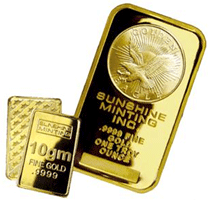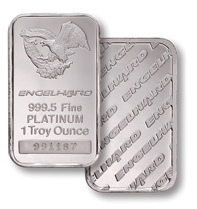Gold won't tarnish, rust, or corrode, and though it's very strong, it is also the softest of all metals. Pure gold is too soft to withstand the stresses of every-day wear, so it is alloyed with a mixture of metals like silver, copper, nickel, and zinc to give it strength and durability. Caratage, noted by a number followed by ct, kt and k indicates purity, or how much of the metal in a piece of jewelry is gold. Caratage is expressed in 24ths, making 24k gold 100% fine gold.

In South African jewellery , you'll find 18ct and 9ct yellow gold. 18ct gold contains more precious metal than 9ct gold. It is composed of 75% gold, which is alloyed with other metals to make it strong enough to withstand every-day wear. Because 9ct gold is composed of only 37.5% gold, and 62.5% other metals that give it strength, its gold colour is not as rich as 18ct gold. Because of this composition 9ct gold is also cheaper than 18ct gold. 9ct gold is most commonly in demand where strength and budget considerations are most important.
Because 18ct white gold is 75% gold, and 9ct white gold is 37.5% gold, jewelry made from these metals has a slight yellow color. To enhance the whiteness, almost all white gold is plated with rhodium, a shiny, white metal which is extremely hard. Depending on the amount of wear to a piece of jewelry, over time this rhodium plating may wear off, revealing the original metal color. Re-plating is a simple process that can be done to restore your jewelry's whiteness if needed.
The most appealing characteristic of platinum is its durability. Each time other metals are scratched or polished, a tiny bit of metal is lost. But not with platinum. A scratch in platinum may leave a mark on the metal, but this metal is so strong that it will not easily chip or splinter. The majority of our platinum jewellery is 95% pure platinum combined with 5% iridium, palladium, ruthenium or other alloys. For guaranteed quality in platinum, look for the marks 950, 950 Plat or Plat.

Palladium is a soft, silvery-white metal that shares many of the characteristics common to the PGMS, such as a relatively high melting point and high density. Although high for a metal, palladium's melting point and density are the lowest of the PGMs. Palladium much like platinum is very resitant to oxidation and corrosion and has excellent catalytic properties. Soft and ductile when annealed, palladium increases with strength and hardness when cold annealed. Palladium can be used on its own or as an additive to white gold alloys.
Keep your gold and platinum jewellery away from harsh chemicals such as chlorine and cleaning fluids. This will reduce daily abrasions and prolong its luster. To clean precious jewellery, use a solution of warm water and detergent-free soap and wash it gently with a soft-bristled brush (an old tooth brush works well). Store your jewellery separately in soft cloth bags or original boxes to protect it from the exposure to harsh daily elements.
| Jewellery Alloys |
Palladium |
9ct white gold |
9ct yellow gold |
14ct white gold |
14ct yellow gold |
18ct white gold |
18ct yellow gold |
22ct yellow gold |
Platinum |
| Availability |
Yes |
Yes |
No |
Yes |
Yes |
Yes |
Yes |
Yes |
Yes |
| Technical Mark |
950 |
375 |
375 |
585 |
585 |
750 |
750 |
925 |
950 |
| Purity |
95% |
37.5% |
37.5% |
58.5% |
58.5% |
75% |
75% |
92.5% |
95% |
| Weight Scale |
Heavy |
Light |
Light |
Medium |
Medium |
Heavy |
Heavy |
Very
Heavy |
Super
Heavy |
| Colour |
Steel White |
Silver White |
Light Yellow |
Silver White |
Mild Yellow |
Silver White |
Deep
Yellow |
Orange Yellow |
Steel White |
| Rhodium Plating |
No |
Yes |
No |
Yes |
No |
Yes |
No |
No |
No |
| Hardness Scale |
Soft |
Very
Hard |
Very
Hard |
Hard |
Hard |
Soft |
Soft |
Very Soft |
Super
Hard |
| Maintenance |
Every 18-24 months |
Every 6-8 months |
Every 12-18 months |
Every 10-12 months |
Every 18-24 months |
Every 18-24 months |
Every 18-24 months |
Every 18-24 months |
Every 24-36 months |
| Price Scale |
RR |
RR |
R |
RRR |
RRR |
RRRR |
RRRR |
RRRRR |
RRRRR |